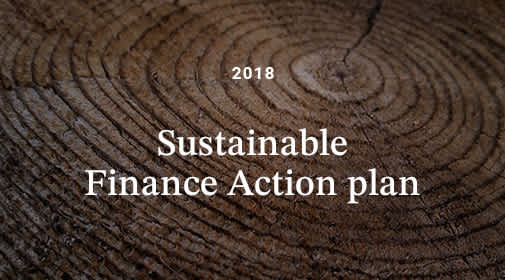
Regulatory framework
Let’s take a closer look together at the European context in which we operate:
The UN’s 2030 Agenda for Sustainable Development – also known as the ‘2030 Agenda’ - with the Sustainable Development Goals (SDGs) at its core, has established a new global sustainable framework.
On June 20, 2017, the European Council issued a statement affirming the European Union and its Member States' commitment to fully and coherently implement the 2030 Agenda in close partnership with relevant stakeholders. The message is clear, the shift towards a low-carbon, sustainable, resource-efficient, and circular economy that aligns with the SDGs is crucial to secure the long-term competitiveness of the EU's economy.

01
The Paris Agreement, aimed at ensuring consistency between financial flows and climate-resilient development, has set a significant objective: the global average temperature increase is to be kept well below 2 degrees Celsius, relative to pre-industrial levels, with an ambition to limit this increase to 1.5 degrees Celsius by the year 2030.

02
The EU aspires to be the first ‘climate-neutral bloc’ in the world by 2050. A set of policy initiatives to guide the EU economy to a modern, circular and competitive future is meant to mobilise public investments and unlock private funds.

03
Here are the key parts of the EU strategy to connect finance with sustainability:
01
Reorienting capital flows towards a more sustainable economy
02
Mainstreaming sustainability in risk management
03
Fostering transparency and long-termism
Building blocks of the Sustainable Finance Action Plan
The Sustainable Finance Disclosure Regulation (SFDR), the EU Taxonomy and the Corporate Sustainability Reporting Directive (CSRD) are an emanation of the Sustainable Finance Action Plan.

SUSTAINABLE FINANCE DISCLOSURE REGULATION (SFDR)
The Regulation (EU) 2019/2088 on sustainability-related disclosures in the financial services sector (as amended, so-called “SFDR”) increases transparency and lowers information asymmetries in the integration of sustainability risks, the consideration of principal adverse sustainability impacts, the promotion of environmental or social characteristics, and sustainable investments – both at entity and product level.

TAXONOMY
REGULATION
The Regulation (EU) 2020/852 on the establishment of a framework to facilitate sustainable investment (so-called “Taxonomy”) introduced a classification system, establishing a list of environmentally-sustainable economic activities, providing companies, investors, and policymakers with appropriate definitions, to help shift investments –where needed– towards sustainable transition.

CORPORATE SUSTAINABILITY REPORTING DIRECTIVE (CSRD)
The Directive 2022/2464 as regards corporate sustainability reporting (so-called “CSRD”) introduces amendments to the current non-financial reporting requirements andwillextend sustainability reporting requirements to more than 38,000 public and private sector companies. In scope companies will have to provide a detailed reporting on their impact on ESG standards, based on common criteria in line with the EU’s climate goals. These standards aim to illustrate companies’ impacts on sustainability matters (impact materiality), and how sustainability matters affect companies’ development, performance and position (financial materiality).The new CSRD rules are expected to apply between 2024 and 2028 (absent any further delay).
MIFID Sustainability Preferences
The delegated act of April 2021 introduces some changes to the so-called ‘MIFID’ regulation. It added a new obligation to factor in sustainability preferences when establishing your risk profile.
When you enter a contract of investment advice and/or discretionary portfolio management, you must, in addition to completing the existing suitability test, express your sustainability preferences to ensure the purchased or recommended instruments fit your respective preferences.
You may express your sustainability preferences by using any of the following three options (or a combination thereof):
01
Proportion of taxonomy-aligned investments
02
Proportion of sustainable investments
03
Product considering principal adverse impact (PAI)
PAI documents